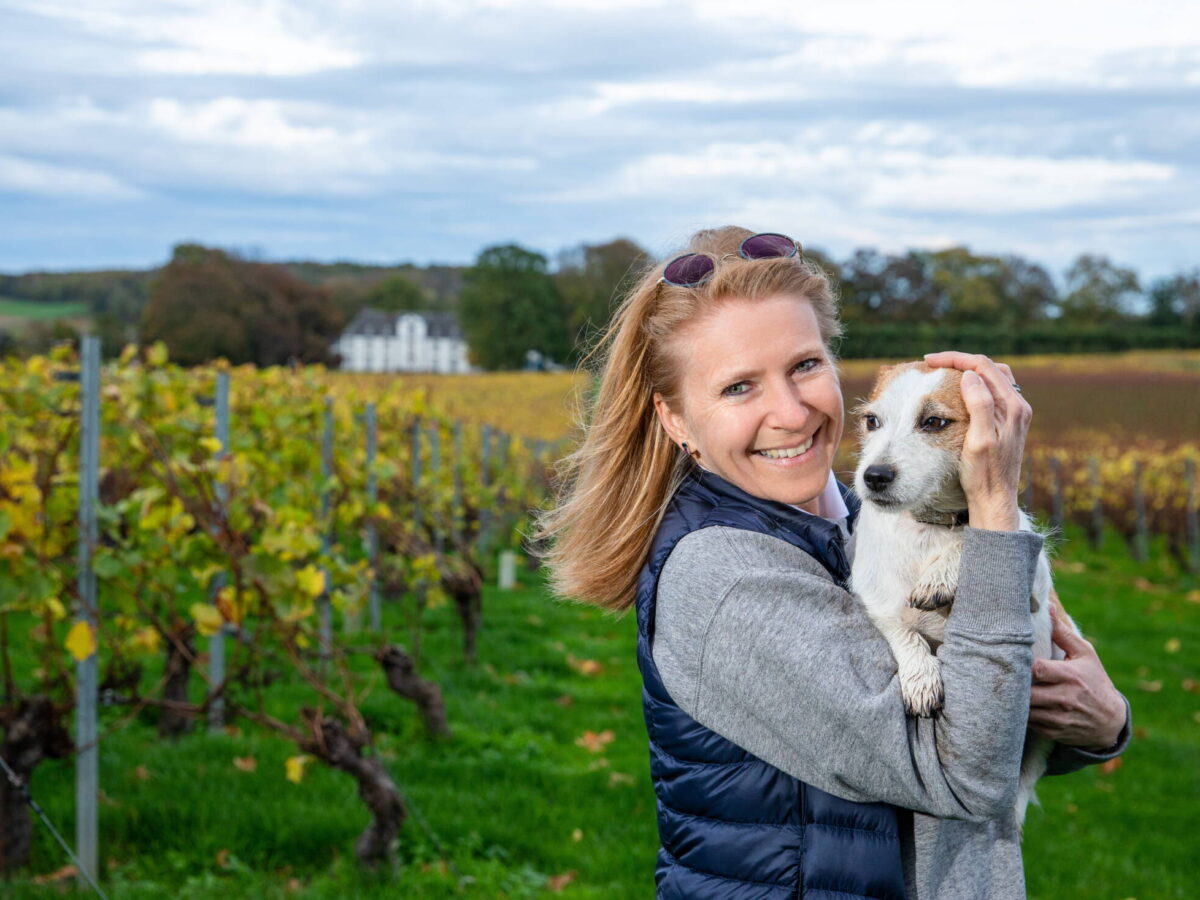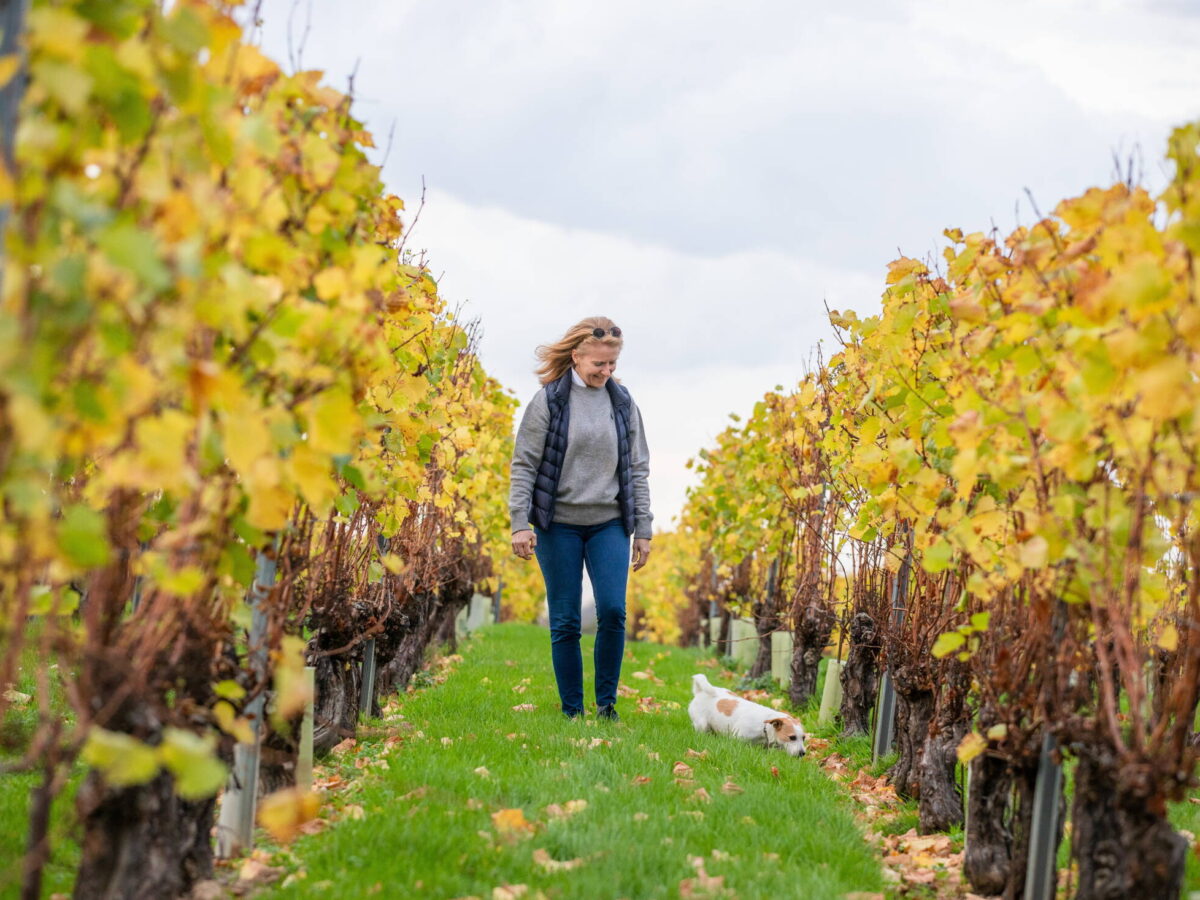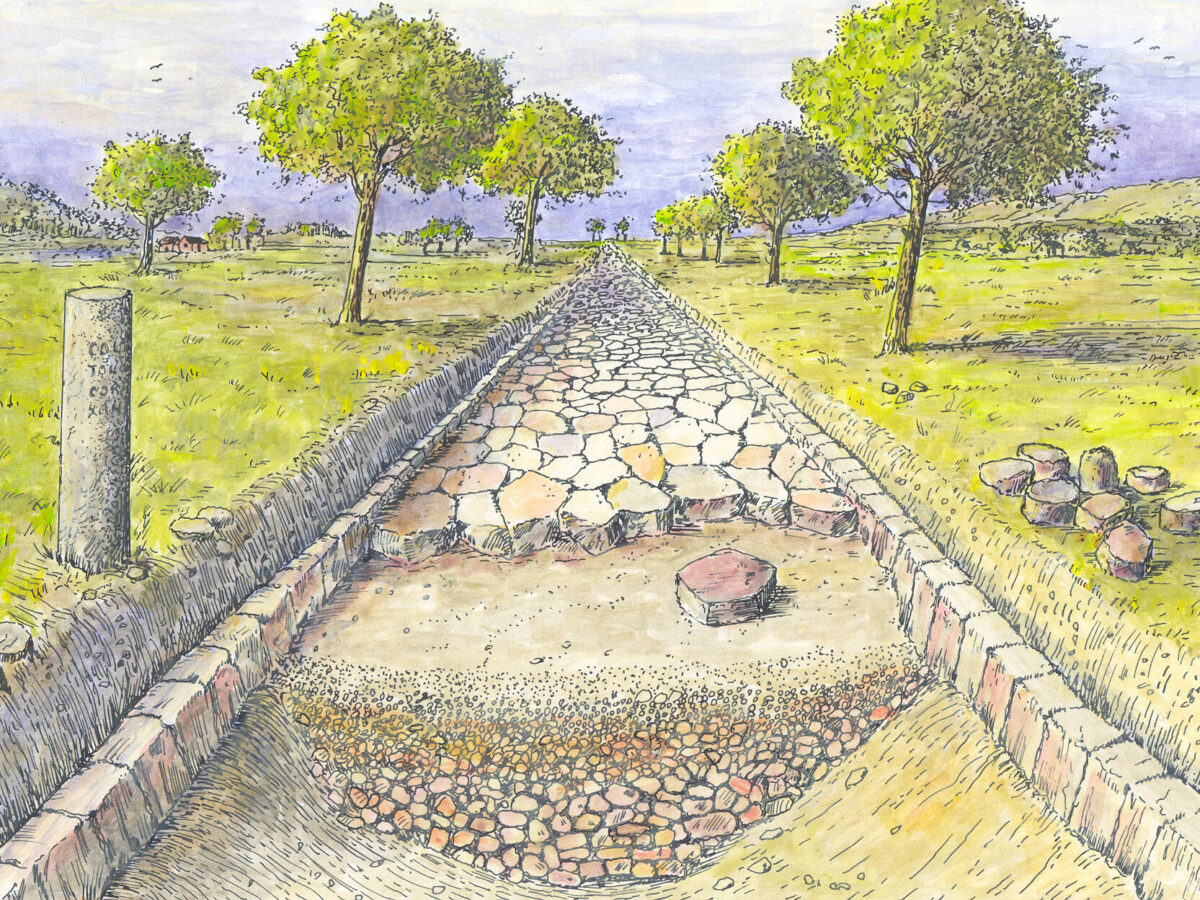Joyce Kékkö-Van Rennes, Friend of Via Belgica
Author: Harry Lindelauf
Photography: Philip Driessen

Who, besides Marcus Agrippa, once worked on the Via Belgica, we will never know for sure. But we do know who is putting the Roman past on the map today: the Friends of Via Belgica. Entrepreneurs, volunteers, institutions, and public authorities. By joining forces, they are turning the Via Belgica into a true road of connection. We are pleased to introduce you to some of these Friends. This time: Joyce Kékkö-Van Rennes.
Around the Van Rennes family’s wine castle, the Roman past is never far away. Not far off lies the Roman road from Tongeren to Maastricht. And in a forest behind the estate, a Roman burial mound can still be seen. Joyce feels closely connected to this Roman heritage: “The Romans were active on our site, as has been discovered in many ways. They lived here at the sources of the Demer and planted their vineyards on the marl and loam slopes. They knew exactly what they were doing. Thanks to them, I have both my profession as a winemaker and my home here.”
“The Romans had a clear sense of what they were doing.”— Joyce Kékkö-Van Rennes

Napoleon
Viticulture in Belgian and Dutch Limburg survived the Romans. But around 1800 it came to an end: Napoleon banned winegrowing outside France. He received unexpected help from a volcanic eruption in Indonesia, which triggered a “little ice age” — the final blow for Limburg winegrowing.
Today, the outlook is much brighter. The Wine Castle began in 1990 with 22 hectares and has since inspired many followers in Limburg. The 31st harvest was brought in at the beginning of November, “the second-earliest harvest in our history,” Joyce notes. “We constantly have to adapt to what nature gives us. That’s always a challenge.” In Genoels-Elderen, that has worked out well, as the many prizes for her wines show. But even in Roman times there was already praise for “the good wine of Tongeren.”

